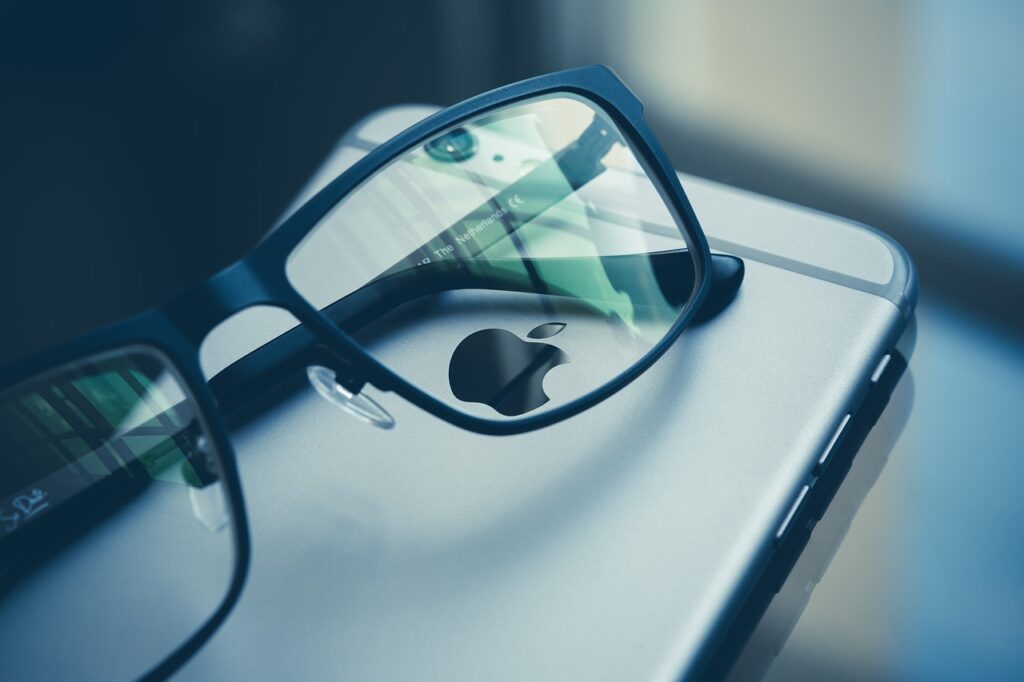More leaks and rumors: Apple’s augmented reality glasses are back in the spotlight thanks to the revelations of “Apple’s leaker” Jon Prosser, who declared to be in possession of very confidential information about both hardware and software of the sophisticated device.
Prosser has already shown in the past that some “rumors” he had spread were reliable: at the beginning of this year, in fact, he predicted precisely when Apple would launch the new iPad, the MacBook Air and the iPhone SE, so the attention of tech news agencies immediately polarized on his latest statements.
Another “source” of leakage, Bloomberg’s Mark Gurman, however, said that all this information is inaccurate.
Although some rumors had hinted that Apple had dissolved the team that dealt with AR, a new patent, which appeared at the end of 2019, describing in detail what appeared to be Apple’s AR glasses, rekindled enthusiasm about the possible commercialization of the device.

They could reach the end of 2020
According to Jon, the “Apple Glasses” will connect wirelessly to the user’s iPhone (in a similar way to Apple Watch) and use the processing power of the smartphone to deliver AR experiences to the lenses of the glasses.
Prosser also added that the prototype he saw had a plastic frame, but the final version should be made of metal.
It is assumed that these frames will be equipped with a LIDAR scanner housed in the right bar, which will use laser light to measure and capture the wearer’s environment. He also said that the price for the basic model will be $499 and that Apple could present it in the fourth quarter of 2020 or the first quarter of 2021.
Prosser also suggests that Apple’s anticipated augmented reality glasses will feature frames that will evoke those worn by the late technology giant’s CEO, Steve Jobs.
According to the leak, the company will release a limited supply of ‘Steve Jobs Heritage Edition‘ glasses once the devices are unveiled.
It’s not clear what the cost of the limited edition devices will be, but unless the company’s plans change, they’ll probably have a design similar to the circular-shaped glasses often worn by Jobs.
Apple’s challenge to augmented reality
Apple has long been building the foundation for its ambitions to develop AR-equipped devices.
At WWDC 2019, for example, it introduced RealityKit, which includes a variety of features for coding AR applications, including the ability to track human movement. RealityKit also supports the construction of multiplayer apps, allowing multiple people to view the same AR environment; this feature is a bombshell for the gaming industry.
Interesting features such as motion capture and multiplayer are only part of the equation; although the iPhone supports AR, Apple fans have been waiting for years for the company to introduce augmented reality glasses.
If Prosser’s right, that moment will come in the coming quarters. But will such a device succeed in the marketplace?
Although Apple CEO Tim Cook has expressed strong confidence that AR will evolve into a ubiquitous (and presumably ultra profitable) technology, AR applications and games have a very heterogeneous result in terms of sales and usage.
For example, the AR game “Pokemon Go” was a great success back in 2016. The rise of “Pokemon” encouraged a boom in AR games and applications such as “The Walking Dead“. However, none of these new software has managed to reach blockbuster numbers.
Despite this, game developers seem confident in the future of this technology. This year’s edition of the annual survey of the Game Developer Conference (which collects responses from around 4,000 developers) revealed that 32% think that AR will be the dominant technology of “immersive reality” in the next five years.